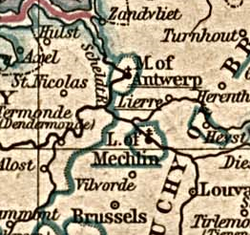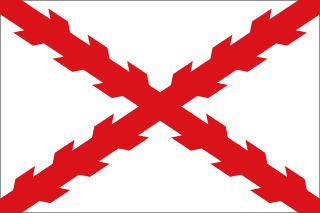
The Seventeen Provinces were the Imperial states of the Habsburg Netherlands in the 16th century. They roughly covered the Low Countries, i.e., what is now the Netherlands, Belgium, Luxembourg, and most of the French departments of Nord and Pas-de-Calais (Artois). Also within this area were semi-independent fiefdoms, mainly ecclesiastical ones, such as Liège, Cambrai and Stavelot-Malmedy.

The Catholic University of Leuven or Louvain was founded in 1834 in Mechelen as the Catholic University of Belgium, and moved its seat to the town of Leuven in 1835, changing its name to Catholic University of Leuven. In 1968, it was split into two universities, the Katholieke Universiteit Leuven and the Université catholique de Louvain, following tensions between the Dutch and French-speaking student bodies.

Philips of Marnix, Lord of Saint-Aldegonde, Lord of West-Souburg was a Flemish and Dutch writer and statesman, and the probable author of the text of the Dutch national anthem, the Wilhelmus.
The Pragmatic Sanction of 1549 was an edict, promulgated by Charles V, Holy Roman Emperor, reorganising the Seventeen Provinces of the present-day Netherlands, Belgium, and Luxembourg into one indivisible territory, while retaining existing customs, laws, and forms of government within the provinces.

Meuse-Inférieure was a department of the French First Republic and French First Empire in present-day Belgium, Netherlands and Germany. It was named after the river Meuse. Its territory corresponded largely with the present-day provinces of Belgian and Dutch Limburg. It was created on 1 October 1795, when the Austrian Netherlands and the Prince-Bishopric of Liège were officially annexed by the French Republic. Before this annexation, its territory was part of the County of Loon, the Austrian Upper Guelders, the Staats-Oppergelre, the County of Horne, the Abbacy of Thorn, Maastricht and part of the Lands of Overmaas. The lands of the original medieval Duchy of Limburg were associated with the Overmaas lands, lying to their south. The two regions had long been governed together and referred to collectively with both names, but the original Duchy lands were not part of this new entity.

Spanish Netherlands was the Habsburg Netherlands ruled by the Spanish branch of the Habsburgs from 1556 to 1714. They were a collection of States of the Holy Roman Empire in the Low Countries held in personal union by the Spanish Crown. This region comprised most of the modern states of Belgium and Luxembourg, as well as parts of northern France, the southern Netherlands, and western Germany with the capital being Brussels. The Army of Flanders was given the task of defending the territory.

The Prince-Bishopric of Liège or Principality of Liège was an ecclesiastical principality of the Holy Roman Empire that was situated for the most part in present-day Belgium. It was an Imperial Estate, so the bishop of Liège, as its prince, had a seat and a vote in the Imperial Diet. The Prince-Bishopric of Liège should not be confused with the Diocese of Liège, which was larger and over which the prince-bishop exercised only the usual responsibilities of a bishop.

The Burgundian Circle was an Imperial Circle of the Holy Roman Empire created in 1512 and significantly enlarged in 1548. In addition to the Free County of Burgundy, the Burgundian Circle roughly covered the Low Countries, i.e., the areas now known as the Netherlands, Belgium and Luxembourg and adjacent parts in the French administrative region of Nord-Pas-de-Calais. For most of its history, its lands were coterminous with the holdings of the Spanish Habsburgs in the Empire.

The Treaty of Huế or Protectorate Treaty was concluded on 6 June 1884 between France and Đại Nam. It restated the main tenets of the punitive Harmand Treaty of 25 August 1883, but softened some of the harsher provisions of this treaty. The treaty, which formed the basis for the protectorates of Annam and Tonkin, and for French colonial rule in Vietnam during the next seven decades, was negotiated by Jules Patenôtre, France's minister to China, and is often known as the Patenôtre Treaty. The treaty was signed on the Vietnamese side by Phạm Thận Duật and Tôn Thất Phan, representatives of the emperor Tự Đức’s court. The treaty marked the Nguyễn dynasty's second acceptance of French protectorate in central and northern Vietnam, but it was canceled by the Nguyễn dynasty on 11 March 1945.

The Liège Revolution, sometimes known as the Happy Revolution, against the reigning prince-bishop of Liège, started on 18 August 1789 and lasted until the destruction of the Republic of Liège and re-establishment of the Prince-Bishopric of Liège by Austrian forces in 1791. The Liège Revolution was concurrent with the French Revolution and its effects were long-lasting and eventually led to the abolition of the Prince-Bishopric of Liège and its final annexation by French revolutionary forces in 1795.
The Walloon Movement is an umbrella term for all Belgium political movements that either assert the existence of a Walloon identity and of Wallonia and/or defend French culture and language within Belgium, either within the framework of the 1830 Deal or either defending the linguistic rights of French-speakers. The movement began as a defence of the primacy of French but later gained political and socio-economic objectives. In French, the terms wallingantisme and wallingants are also used to describe, sometimes pejoratively, the movement and its activists. To a lesser extent, the Walloon Movement is also associated with the representation of the small German-speaking population in the East Belgium of the Walloon Region.
The Walloon Movement traces its ancestry to 1856 when literary and folkloric movements based around the Society of Walloon language and literature began forming. Despite the formation of the Society of Walloon Literature, it was not until around 1880 that a "Walloon and French-speaking defense movement" appeared, following the linguistic laws of the 1870s. The movement asserted the existence of Wallonia and a Walloon identity while maintaining the defense of the French language.
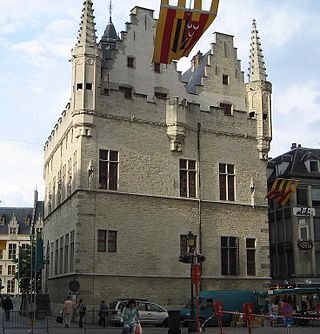
From the 15th century onwards, the Great Council of the Netherlands at Mechelen was the highest court in the Burgundian Netherlands. It was responsible for the Dutch-, French- and German-speaking areas. In Luxembourgish the phrase "mir ginn op Mechelen" still means playing one's last trump card. The Grote Raad first sat in the Schepenhuis in Mechelen then, from 1616, in the (old) palace of Margaretha of Austria on Keizerstraat.
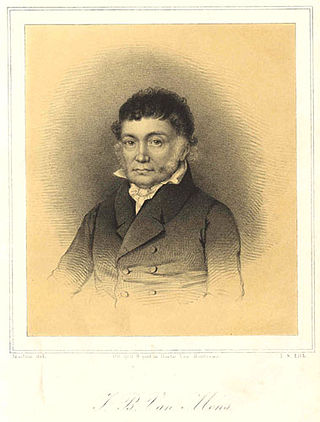
The State University of Leuven was a university founded in 1817 in Leuven in Belgium, then part of the United Kingdom of the Netherlands. It was distinct from the Old University of Leuven (1425-1797) and from the Catholic University of Leuven, founded in 1834, which moved from Mechlin to Leuven after the State University had been closed in 1835.

The Old University of Leuven is the name historians give to the university, or studium generale, founded in Leuven, Brabant, in 1425. The university was closed in 1797, a week after the cession to the French Republic of the Austrian Netherlands and the principality of Liège by the Treaty of Campo Formio.
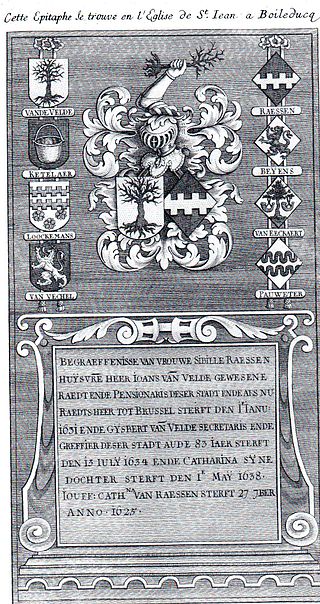
Beyens de Grambais is a Dutch-Belgian family of nobility, with a branch settling in the Southern Netherlands in the early 17th century.

The Lordship of Overijssel or Overissel is a former division of the Netherlands named for its position along the river Issel.
Henry Jaye was an English Catholic exile in the Southern Netherlands. He became printer to the city of Mechelen.
The Malines Congresses were a series of Catholic Congresses held in Mechelen, Belgium, with the purpose of bringing together Catholics with leading roles in all walks of life, on the model of the German Katholikentage. The first three, held in 1863, 1864 and 1867, had considerable cultural, social and political impact. They lay at the foundation of the future development of a Catholic Party in Belgian politics, as well as a nascent Social Catholicism. The first congress saw the establishment of the Guild of Saint Thomas and Saint Luke, which shaped Belgian Gothic Revival architecture and art education. The main organiser of the first three congresses was Édouard Ducpétiaux, who died in 1868. They were hosted in Mechelen by the archbishop, Engelbert Sterckx, who died in December 1867, although much of the practical management fell to Isidore-Joseph du Rousseaux, a teacher at the junior seminary where many of the sessions were held.
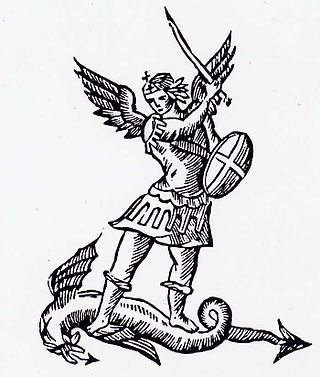
In Brussels, as in most European cities, one needed the capacity of bourgeois in order to not only exercise political rights, but also to practice a trade, which, in Brussels, meant to be a member of the Guilds or of the Seven Noble Houses. The charter of Brussels, as codified in 1570 in articles 206 and following, provided the conditions of admission to the bourgeoisie of the city. The Bourgeois were the patrician class of the city. This social class was abolished by Napoleon during the French occupation.

